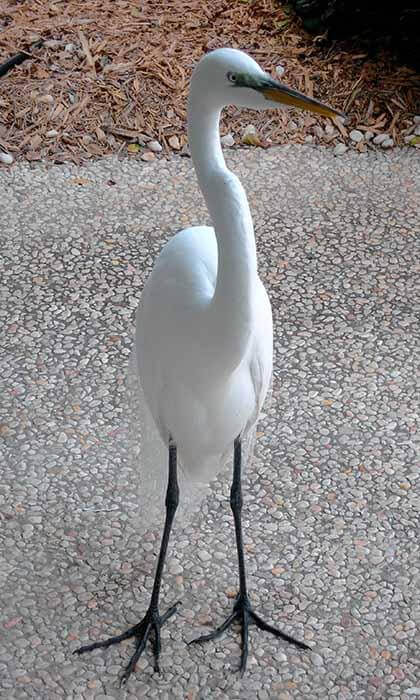On a cloudless September Saturday, it is high tide at the Jamaica Bay Wildlife Refuge. With the fall migration in full swing, my wife and I have come here not knowing what to expect.
Immediately, we are surprised. In an osprey nest is what looks like a herring gull with temporary squatter’s rights. Its residents have probably headed south. In the West Pond are two adult mute swans, huge white birds with four medium-brown, immature swans in tow. They paddle through the water like old-fashioned Mississippi River steamboats. Later, when we see them feeding, mom and dad stick their whole heads underwater while the youngsters dip just their bills.
On the pond’s far side are white dots in tall green trees. It is not snow but two dozen migrating great egrets that have temporarily turned the trees into a condominium. In the water, a number of resident Canada geese are starting to flap their wings and make a soft sound, a cross between croaking and bugling. Among the geese is a shoveler, a duck whose name is derived from its distinctively long, broad bill, which resembles an elongated shoehorn. Drops of water roll off its brown bill as the shoveler preens itself. The duck stands on orange legs in the water, on the surface of which are broken reflections of the larger Canada geese. The scene resembles an impressionist painting.
Far off in the sky there is a long skein of spread-out black shapes, which move like a line of slow-rolling black ink. As they get closer, the shapes, which are Canada geese numbering about 70, start to change position at the front of their loose V formation. I make the mistake of thinking they are heading south: Less than a minute later, they noisily splash down.
At the pond’s most western edge are a large number of double-crested cormorants, which are black diving birds with long, hook-tipped bills. They are nicknamed “shags” because they take fish from underwater. At the moment, many have their wings spread to dry. As we get close to the egret condo, we cannot see much.
Two of these large, whitefish eaters take off from the branches and fly at a shallow angle to the water. One stands tall and stately, its long neck held high, standing almost motionless. These birds have the patience of Job standing still for long periods of time searching the water for fish. When one sees a fish, it snaps it in its bill in what seems like a millisecond. Nearby is a yellowlegs, a migrating shorebird, feeding by the shore.
We have seen a lot today which we have not seen here before, and I want to see more. Coming to a familiar spot, we look out over the marsh where the Cross Bay Veterans Memorial Bridge can be seen above the bay’s blue water. There is something about it that is bucolic. I stop for a minute to feel the moment. Avian surprises can wait.
Michael Givant
Woodbury, L.I.

































